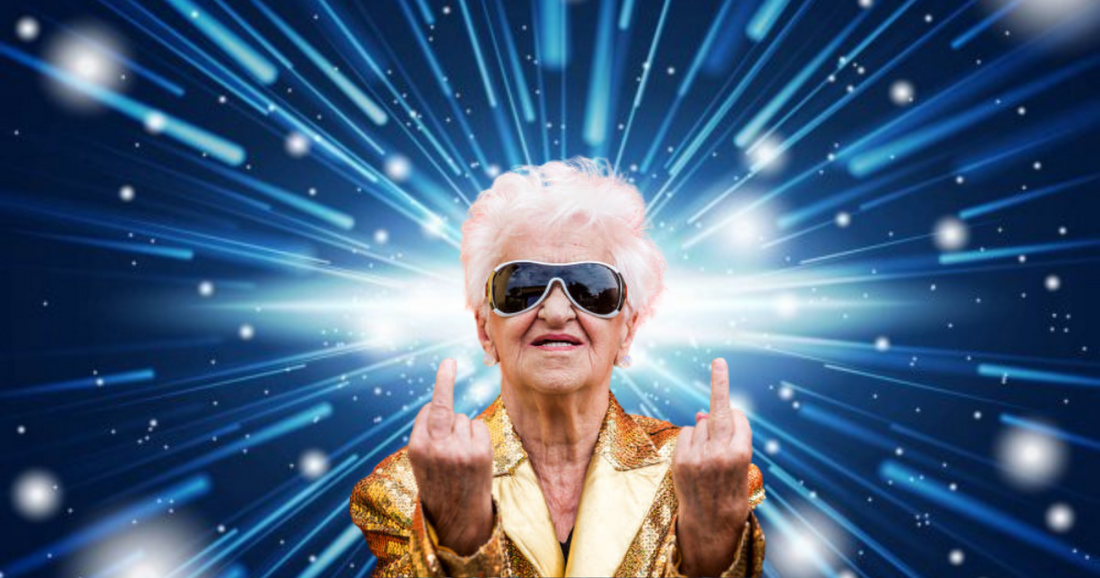
What Would Happen If The Speed Of Light Was Much Slower?
Share
We've been prodded by yet another follower at our Facebook page.
Therefore, dear readers, it is time to; Ask ARSE!
"Hey ARSE, I liked your answer to the gravity question if it wasn't as strong. But similar to that what would happen if the speed of light wasn't as fast? Cheers for the good work Clintern" - Greg
Thanks for asking Greg and I'll keep up the good work too I guess... - Kathy from HR

The fastest thing in the universe is light. But suppose light moved at a much, much slower speed... In a vacuum, light travels at a speed of 300,000 kilometres per second. If it travelled at an even slower speed, humans would notice it instantly.
Human's sluggish speeds

Even at our fastest speeds, humans are slow compared with light.
"The fastest any human has travelled is about 0.0037% the speed of light, and you need to be in some kind of space vehicle to reach those speeds," Philip Tan, a research scientist at the MIT Game Lab said.
However, by doing thought experiments, physicists have found that unusual things would happen if humans could move at near light speed, said Kortemeyer, an associate professor of physics at Michigan State. We would measure objects as being shorter as we flew past them, and the Doppler effect would become visible, among other things, according to Albert Einstein's theory of special relativity.
The same changes would occur if instead of humans speeding up, light slowed down. If either happened, we'd be going near light speed.
Slower light speed

Kortemeyer was a visiting professor at MIT when he, Tan and other researchers at the MIT Game Lab created a computer game to show what life would be like if the speed of light were slow enough to make special relativity noticeable. In the game, called "A Slower Speed of Light," you control a character who collects beach-ball-like orbs. Every time the character collects one of the 100 orbs, the speed of light slows down.
In reality, the speed of light wouldn't slow down as it does in the game. The spIt's always the same speed for every observer in a vacuum. While the speed of light changes depending on the materials it's passing through, it doesn't change how we perceive the effects of special relativity, Kortemeyer said.
Special relativity, however, would change colour, time, distance, and brightness, so the team incorporated those effects into the game.
Recolouring

A phenomenon called the relativistic Doppler effect kicks in when people move faster than light. Remember that light acts like both a particle and a wave. Waves are defined by their wavelength, or how far one crest is from another, which determines their colour, and by their frequency, or how many crests pass in a given time.
According to the Doppler effect, approaching a sound source makes its pitch sound higher as it gets closer to your ear, moving toward a light source makes its wavelength seem shorter, shifting its visible colour to the blue and violet end of the spectrum, Kortemeyer said.
In contrast, moving away from an object shifts its apparent colour toward the red end of the spectrum. In sum, "the thing coming toward you looks bluer, or the thing moving away from you looks redder," Kortemeyer said.
Changing time and distance

One of the most famous effects of special relativity is that time slows down for someone moving at near the speed of light. Someone moving at near light speed would age more slowly in this scenario. This is time dilation.
Tan says you're experiencing time dilation in the game, but without a benchmark to compare it to, it doesn't mean much. During the game, it's hard to tell if they've slowed down, but at the end, they see a screen telling them that less time has passed for them than for a stationary clock, Tan said. In the game, time dilation happens because the character is moving at nearly the speed of light.
As you zoom past stationary objects at near light speed, you'll see that the distance between them shortens because of special relativity. It's called length contraction. However, Kortemeyer says the effect is complicated. Objects zooming at close to the speed of light might experience length contraction and seem shorter to a stationary observer, but they would actually appear longer thanks to a special relativity effect called the runtime effect, Kortemeyer said.
Let's say you see a car coming your way. It takes less light from the front of the car to get to your eyes than light from the back. Because of that, you see the front of the car as it was more recently and the back as it was further in the past when the car was farther away. "That overall makes it (the car) appear longer," Kortemeyer said. Sometimes the same effect makes things look warped.
Objects moving near the speed of light might look warped and/or longer to observers standing still if it were slower.
Changes to brightness

You might notice you get wetter in front than you do in back when you walk in the rain. The front of your body protects the back of your body from those extra raindrops as you walk into the rain. Kortemeyer said something like that would happen if you were moving at near light speed.
That's because light behaves sometimes like little droplets of light called photons. When you walk towards an object in the computer game, it appears brighter than it does when you're standing still, because you're walking into its photons. That's the searchlight effect.
Does this satisfy your craving for understanding light?
Try some of these cool concepts today with different colours and wavelengths.
#Space_Aus




